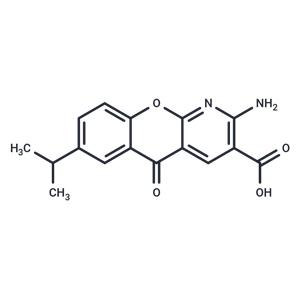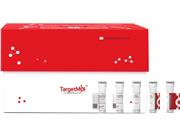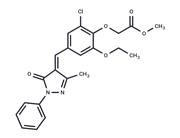| Name | Amlexanox |
| Description | Amlexanox (AA673) is an anti-aphthous ulcer drug. Amlexanox inhibits the synthesis and release of inflammatory mediators, including leukotrienes and histamine, from mast cells, neutrophils, and mononuclear cells. Amlexanox also acts as a leukotriene D4 antagonist and a phosphodiesterase inhibitor. Amlexanox decreases the time ulcers take to heal as well as the pain associated with the ulcers. |
| Cell Research | To examine cell proliferation, a Cell Counting Kit-8 is used according to the manufacturer's instructions. BMMs are seeded at a density of 5×103 cells/well in 96-well plates. After 24?hours, cells are treated with different concentrations of AmLexanox (0, 1.5, 3, 6, 12, 25?μM) every 2 days in the presence of M-CSF (30?ng/mL) for 7 days. After 1, 3, 5 and 7 days, the culture medium is replaced by the medium containing 10% CCK-8 and cells are incubated at 37°C for an additional 2?h. The absorbance is then measured at a wavelength of 450?nm on an ELX800 absorbance microplate reader. |
| Kinase Assay | The in vitro kinase assays is performed by incubating purified kinase (IKKε or TBK1) in kinase buffer containing 25 mM Tris (pH7.5), 10 mM MgCl2, 1 mM DTT, and 10 μM ATP for 30 minutes at 30°C in the presence of 0.5 μCi γ-[32P]-ATP and 1 μg MBP per sample as a substrate. The kinase reaction is stopped by adding 4x sodium dodecyl sulfate (SDS) sample buffer and boiling for 5 minutes at 95°C. Supernatants are resolved by SDS-polyacrylamide gel electrophoresis, transferred to nitrocellulose, and analyzed by autoradiography using a Typhoon 9410 phosphorimager. |
| In vitro | AmLexanox increases phosphorylation of TBK1 on Ser172 in 3T3-L1 adipocytes, and blocks polyinosinic:polycytidylic acid (poly I:C)-stimulated phosphorylation of interferon responsive factor-3 (IRF3), a presumed substrate of IKKε and TBK1[1]. AmLexanox potently inhibits the release of histamine and leukotrienes from mast cells, basophils and neutrophils in in vitro settings, possibly through increasing intracellular cyclic AMP content in inflammatory cells, a mem-brane-stabilising effect or inhibition of calcium influx[2]. In primary bone marrow derived macrophages (BMMs), amLexanox inhibits osteoclast formation and bone resorption. At the molecular level, amLexanox suppresses RANKL-induced activation of nuclear factor-κB (NF-κB), mitogen-activated protein kinase (MAPKs), c-Fos and NFATc1. AmLexanox decreases the expression of osteoclast-specific genes, including TRAP, MMP9, Cathepsin K and NFATc1[3]. |
| In vivo | AmLexanox (100 mg/kg, p.o.) prevents and reverses diet-induced or genetic obesity, and produces reversible weight loss in obese mice. AmLexanox also causes a significant decrease in adipose tissue mass in these mice, and an increase in circulating adiponectin. AmLexanox (25 mg/kg) significantly improves insulin sensitivity in mice with established DIO,and after four weeks of treatment, amLexanox produces marked improvements in glucose[1]. AmLexanox before the first application of the paste and at each has been shown to suppress both immediate and evaluation thereafter. A categorical scale is also delayed-type hypersensitivity reactions[2]. AmLexanox (20?mg/kg) enhances osteoblast differentiation of BMSCs. In ovariectomized (OVX) mouse model, amLexanox prevents OVX-induced bone loss by suppressing osteoclast activity[3]. |
| Storage | Powder: -20°C for 3 years | In solvent: -80°C for 1 year | Shipping with blue ice. |
| Solubility Information | DMSO : 50 mg/mL (167.62 mM)
|
| Keywords | CHX-3673 | AA 673 | Amlexanox | I kappa B kinase | inhibit | IKK | Inhibitor | IκB kinase | CHX 3673 | AA-673 |
| Inhibitors Related | Ferulic Acid | Diallyl disulfide | Pazopanib |
| Related Compound Libraries | Bioactive Compound Library | Membrane Protein-targeted Compound Library | Tyrosine Kinase Inhibitor Library | Anti-Cancer Clinical Compound Library | Inhibitor Library | FDA-Approved Drug Library | Anti-Aging Compound Library | Bioactive Compounds Library Max | Anti-Cancer Drug Library |

 United States
United States



